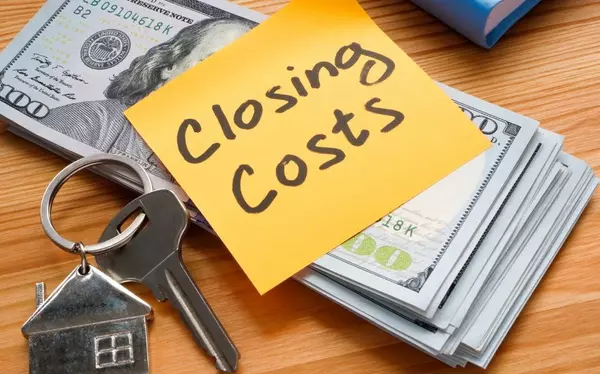Why are housing prices skyrocketing, and will I ever own a home?

Why are housing prices skyrocketing, and will I ever own a home?
I. Introduction
In recent years, the real estate market has witnessed an unprecedented surge in house prices, leaving many prospective homeowners wondering if their dream of owning a home will ever become a reality. The numbers speak for themselves: across various regions, from bustling urban centers to serene suburban neighborhoods, the cost of purchasing a home has soared to staggering heights. According to recent data, median home prices have skyrocketed by double-digit percentages in many areas, far outpacing the rate of inflation and wage growth.
This surge in house prices can be attributed to a multitude of factors, each contributing to the complex tapestry of the housing market. One major driver is the imbalance between supply and demand. As the population continues to grow and urbanization accelerates, the demand for housing has surged, while the supply struggles to keep pace. This scarcity of available homes has created fierce competition among buyers, driving prices upwards.
Additionally, historically low mortgage rates have fueled demand, making homeownership more accessible to a broader range of individuals. With interest rates at record lows, prospective buyers have been spurred to enter the market, further intensifying competition and bidding wars.
The global health crisis has also played a significant role, reshaping housing preferences and accelerating existing trends. Remote work arrangements have prompted many to reassess their living situations, leading to increased demand for larger homes with home office spaces and outdoor amenities.
In the face of these challenges, aspiring homeowners may feel disheartened, but it's essential to remain optimistic. By staying informed about market trends, exploring alternative housing options, and seeking out financial planning resources, the dream of homeownership can still be within reach.
Key Takeaways:
- Complex Factors Drive House Price Surge: The surge in house prices is fueled by a combination of factors, including supply and demand dynamics, low interest rates, economic influences, and investor activity. Understanding these factors is crucial for grasping the complexities of the housing market.
- Regional Disparities Impact Price Trends: Price surges vary significantly across different regions, with urban centers experiencing astronomical increases driven by factors like population density and economic growth, while rural areas may see more modest growth or stagnation.
- Policy Interventions Aim to Address Affordability: Policymakers are implementing various interventions, such as government initiatives, zoning reforms, and affordable housing programs, to tackle housing affordability challenges and promote sustainable homeownership opportunities.
- Challenges and Opportunities for Aspiring Homeowners: Aspiring homeowners face affordability concerns, but exploring alternative housing options and adopting financial planning strategies can help overcome hurdles and realize homeownership goals.
- Future Outlook for Homeownership: Long-term trends, policy outlook, and personal finance strategies will shape the future of homeownership. Staying informed, proactive, and resilient is key to navigating the evolving landscape of homeownership and turning aspirations into reality.
II. The Current Housing Market Landscape
The housing market landscape is in a state of flux, characterized by dynamic shifts and unprecedented trends that have reshaped the way we perceive homeownership. To understand the intricacies of this landscape, it's essential to delve into the statistical overview of recent trends in house prices.
Statistical data paints a vivid picture of the housing market's evolution, revealing stark contrasts and notable patterns. Across the board, house prices have experienced a remarkable surge, defying conventional expectations and surpassing previous records. This surge is not uniform, however, with variations observed in different regions.
Regional disparities play a crucial role in shaping the housing market landscape, with price surges varying significantly from one area to another. Urban centers may experience astronomical increases in property values, driven by factors such as population density, economic growth, and infrastructure development. In contrast, rural areas may see more modest growth or even stagnation, reflecting distinct market dynamics and local influences.
Moreover, the global health crisis has emerged as a defining factor in shaping housing market dynamics. The pandemic has introduced unprecedented challenges and opportunities, reshaping housing preferences and accelerating existing trends. Remote work arrangements, for instance, have spurred demand for spacious homes with dedicated office spaces and outdoor amenities, reshaping the housing market's dynamics in unforeseen ways.
III. Unpacking the Reasons Behind Rising House Prices
The surge in house prices has left many scratching their heads, wondering what factors are driving this unprecedented trend. To unravel the mystery behind rising house prices, we must delve into the intricate web of supply and demand dynamics, interest rates, economic factors, and investor activity.
Supply and demand dynamics lie at the heart of the housing market, dictating the equilibrium between available housing stock and the burgeoning demand from buyers. In recent years, this balance has been disrupted, with housing supply failing to keep pace with the ever-growing demand. This scarcity of available homes has fueled intense competition among buyers, driving prices to dizzying heights.
Low interest rates have also played a pivotal role in inflating house prices. Historically low mortgage rates have made homeownership more accessible to a broader swath of the population, stimulating demand and intensifying competition among buyers. With borrowing costs at rock-bottom levels, prospective homeowners have been incentivized to enter the market, further exacerbating price escalation.
Economic factors exert a significant influence on housing prices, reflecting broader trends in economic growth, employment rates, and inflation. Robust economic growth and low unemployment rates typically coincide with increased consumer confidence and purchasing power, driving demand for homes and pushing prices upward.
Finally, investor activity has exerted a notable influence on the housing market, with institutional investors and speculators entering the fray in search of lucrative opportunities. Their presence can contribute to price volatility and distort market dynamics, particularly in high-demand areas.
IV. Policy Interventions and Their Effectiveness
As house prices continue to soar, policymakers have scrambled to implement a variety of interventions aimed at addressing housing affordability and stabilizing the market. These interventions span a spectrum of measures, ranging from government policies to zoning regulations and affordable housing initiatives.
Government interventions have been a cornerstone of efforts to tackle the housing affordability crisis. These policies encompass a wide range of initiatives, including tax incentives, subsidies, and grants designed to make homeownership more accessible to low- and middle-income individuals. Additionally, government-backed mortgage programs aim to provide affordable financing options to aspiring homebuyers, further bolstering affordability.
Zoning regulations and land use policies also play a pivotal role in shaping the housing market landscape. These regulatory frameworks dictate the permissible uses of land, influencing the availability and cost of housing in different areas. In some cases, restrictive zoning laws and excessive red tape can hinder development and exacerbate housing shortages, contributing to price escalation. Addressing these regulatory barriers is essential for unlocking new housing supply and promoting affordability.
Affordable housing initiatives represent another critical component of policy interventions. These programs are specifically designed to assist first-time homebuyers and low-income households in accessing affordable housing options. From down payment assistance programs to affordable rental housing initiatives, these interventions aim to level the playing field and expand homeownership opportunities for marginalized communities.
While policy interventions can play a crucial role in addressing housing affordability, their effectiveness is contingent on various factors, including implementation strategies, funding allocations, and broader economic conditions. By adopting a multifaceted approach that combines government interventions, regulatory reforms, and affordable housing initiatives, policymakers can work towards creating a more inclusive and sustainable housing market for all.
V. Challenges and Opportunities for Aspiring Homeowners
Navigating the path to homeownership is fraught with challenges and opportunities, as aspiring homeowners grapple with affordability concerns, explore alternative housing options, and seek out financial planning strategies to realize their dreams.
Affordability concerns loom large for many would-be homeowners, as the gap between incomes and housing costs continues to widen. Assessing this affordability gap is crucial for understanding the feasibility of homeownership and its implications for individuals and families. High housing costs relative to incomes can strain household budgets, making it difficult to save for a down payment or afford mortgage payments.
In light of these challenges, exploring alternative housing options can provide a ray of hope for aspiring homeowners. Renting, for instance, offers flexibility and lower upfront costs compared to homeownership, allowing individuals to build savings and stabilize their financial footing. Co-living arrangements and shared equity schemes represent innovative approaches to housing that promote affordability and community engagement, offering viable alternatives to traditional homeownership.
Financial planning plays a pivotal role in overcoming the hurdles to homeownership, empowering individuals to save for a down payment and navigate the homebuying process with confidence. Strategies such as budgeting, setting savings goals, and exploring down payment assistance programs can help aspiring homeowners overcome affordability barriers and achieve their homeownership aspirations.
VI. The Future Outlook for Homeownership
As the housing market continues to evolve, the future outlook for homeownership remains a topic of keen interest and speculation. From long-term trends to policy outlook and personal finance strategies, various factors will shape the landscape of homeownership in the years to come.
Long-term trends in the housing market offer valuable insights into the sustainability of current price trends. While past performance is not always indicative of future outcomes, analysts closely monitor key indicators such as housing supply, demand dynamics, and economic fundamentals to make predictions about future price movements. Assessing these trends can help prospective homebuyers gauge the feasibility of entering the market and making informed decisions about their homeownership aspirations.
Policy outlook also plays a critical role in shaping the future of homeownership. Policymakers are under increasing pressure to enact reforms aimed at addressing housing affordability and promoting sustainable homeownership opportunities. From zoning reforms to affordable housing initiatives and down payment assistance programs, the policy landscape is ripe for innovation and reform. Prospects for policy reforms will depend on various factors, including political dynamics, public sentiment, and economic conditions.
In the realm of personal finance, individuals can take proactive steps to achieve their homeownership goals. From budgeting and saving strategies to exploring alternative financing options and maximizing down payment assistance programs, there are various adjustments individuals can make to improve their financial standing and increase their chances of homeownership success.
VII. Conclusion
In conclusion, the surge in house prices is driven by a complex interplay of factors, including supply and demand dynamics, low interest rates, economic influences, and investor activity. These forces have contributed to a challenging landscape for aspiring homeowners, characterized by affordability concerns and alternative housing options. However, despite these challenges, the dream of homeownership remains within reach for many.
Throughout this discussion, we've explored the various facets of the housing market, from the statistical overview of price trends to the impact of policy interventions and personal finance strategies. Understanding these factors is essential for navigating the complexities of the housing market and making informed decisions about homeownership.
While the road to homeownership may be fraught with obstacles, it's important to remain optimistic and resilient. By staying informed about market trends, exploring alternative housing options, and implementing sound financial planning strategies, individuals can overcome challenges and achieve their homeownership goals.
As we look to the future, it's crucial for aspiring homeowners to stay informed and proactive. Keep abreast of market developments, explore housing options that align with your needs and financial capabilities, and seek out resources and assistance programs to support your journey towards homeownership.
In closing, remember that homeownership is not just a financial investment but a deeply personal milestone. Despite the challenges, the possibility of owning a home and creating a place to call your own is well within reach. With determination, perseverance, and a proactive mindset, you can turn your homeownership aspirations into reality.
Categories
Recent Posts










